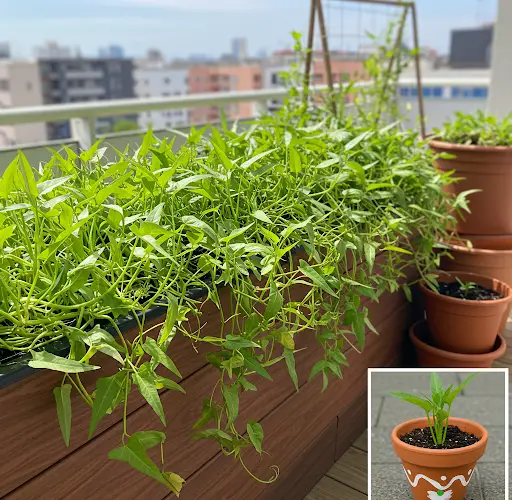Growing your own vegetables at home is not only a rewarding experience but also an excellent way to save money while ensuring a continuous supply of fresh, organic produce. With the right techniques and planning, you can cultivate a variety of vegetables throughout the year without spending a fortune. In this guide, we’ll explore how to create a self-sustaining vegetable garden using cost-effective methods, natural fertilizers, and smart gardening practices.
1. Choosing the Right Vegetables for Year-Round Harvest
To enjoy fresh vegetables in every season, select crops that grow well in different weather conditions. Here’s a basic seasonal guide:
-
- Spring & Summer Crops: Tomatoes, cucumbers, peppers, beans, lettuce, and zucchini thrive in warm weather.
- Fall & Winter Crops: Kale, spinach, carrots, broccoli, cauliflower, radishes, and garlic do well in cooler temperatures.
- Perennial Vegetables: Asparagus, chives, rhubarb, and perennial kale regrow every year, reducing the need for replanting.
By diversifying your garden, you’ll always have something growing, regardless of the season.
2. Using Kitchen Scraps to Grow Free Vegetables
One of the easiest ways to grow food without spending money is by regrowing vegetables from kitchen scraps. Here are some common examples:
-
- Lettuce, Celery, and Cabbage: Place the base of these vegetables in water until roots form, then transfer them to soil.
-
- Green Onions and Leeks: Put the roots in water, and they’ll start regrowing in a few days.
- Potatoes and Sweet Potatoes: Allow sprouted potatoes to dry, then plant them in soil.
- Garlic and Ginger: Plant cloves or rhizomes in well-drained soil for a continuous harvest.
This method is not only budget-friendly but also reduces food waste in your home.
3. Creating a Low-Cost Vertical or Container Garden
If you have limited space, consider growing vegetables in containers or vertical gardens:
-
- Use Recycled Containers: Old buckets, plastic bottles, or wooden crates can be repurposed as plant containers
- Vertical Gardening: Hanging planters, stacked pots, or wall-mounted garden systems maximize small spaces.
- Hydroponic or Water-Based Growing: Growing vegetables in water with nutrients can be an excellent alternative for indoor gardening.
Container gardening is an effective way to cultivate crops in small areas like balconies, rooftops, or patios.
4. Making Natural Fertilizer and Compost at Home
Instead of purchasing expensive fertilizers, you can make nutrient-rich compost from household waste:
-
- Vegetable Peels and Leftovers: Collect fruit and vegetable scraps in a compost bin.
- Eggshells and Coffee Grounds: These add calcium and nitrogen to the soil.
- Banana Peels and Wood Ash: Boost potassium levels for healthier plants.
Composting improves soil health, reduces waste, and ensures a constant supply of nutrients for your vegetables.
5. Watering Wisely with Rainwater Collection
To cut down on water costs, collect rainwater in buckets or barrels. Use this water to irrigate your garden, reducing dependency on tap water. Drip irrigation systems or self-watering containers also help conserve water.
6. Seed Saving for Endless Planting
Rather than buying new seeds every season, practice seed-saving techniques:
-
- Tomatoes, Peppers, and Squash: Scoop out the seeds, dry them, and store them in a cool place.
- Beans and Peas: Allow pods to dry on the plant before collecting seeds.
- Leafy Greens (Lettuce, Spinach): Let some plants bolt and produce seeds for the next planting cycle.
Saving seeds ensures you’ll always have a supply of free plants each year.
7. Companion Planting for Natural Pest Control
To avoid spending on pesticides, use natural pest control techniques like companion planting:
- Marigolds & Basil: Repel pests and attract pollinators.
- Garlic & Onions: Keep aphids and beetles away.
- Mint & Rosemary: Deter ants, flies, and cabbage moths.
This method creates a balanced ecosystem where plants help each other thrive.
8. Growing Indoors for a Year-Round Supply
If outdoor space is limited, grow vegetables indoors using windowsills, hydroponic systems, or LED grow lights. Herbs like basil, parsley, and chives do well indoors, along with leafy greens like lettuce and spinach.
9. Extending the Growing Season with Simple Techniques
To ensure a continuous supply of vegetables, use these methods:
- Mulching: Retains moisture and regulates soil temperature.
- Cold Frames and Row Covers: Protect plants from frost in colder months.
- Succession Planting: Stagger planting times so you always have fresh vegetables ready to harvest.
By implementing these strategies, you can extend your growing season and increase your food supply.
10. Community Gardening and Seed Swaps
Join local gardening groups where members exchange seeds, seedlings, and gardening tips. This is an excellent way to access diverse plant varieties without spending money.
Final Thoughts
Growing your own vegetables at home without spending money is entirely possible with creativity and resourcefulness. By using kitchen scraps, composting, water-saving techniques, and seed-saving strategies, you can enjoy fresh, organic produce all year round. Not only does this save money, but it also promotes sustainable living and a healthier lifestyle. Start your vegetable garden today, and experience the joy of homegrown food without breaking the bank!
